Avoiding Delays In Clinical Trials: CRO Vendor Selection is a critical process for growing and evolving biotechs. But it’s also highly complex, and if the company stumbles during the vendor selection process, that mistake could delay or even derail a project.
Getting the vendor selection process right is challenging and requires expertise. In our experience, it’s worth the trouble: if you start strong, you can set up a positive supplier relationship that will support your project and your company in the long-term.
At Seuss+, we have been performing CRO and Vendor Selections for more than a decade. Rather than take the risk of tripping over the complexities of the vendor selection process and delaying their projects, companies work with us for a faster path to success.
Now we’re sharing some of our insights. In a recent life science webinar, our very own experts answered some of the most-asked questions about CRO and Vendor Selection, helping you reap the benefits of our life science consulting experience.
In the webinar Your Burning CRO and Vendor Selection Questions… Answered, Seuss+ CEOs and Co-Founders Kieran Canisius and Sabine Hutchison, and Senior Business Consultant Nicolyn Liebenberg answer the six most frequently searched questions about CRO and vendor selection in life science – and a couple of wildcards.
In this article, read on to discover the key insights and takeaways from this interactive session, which was informative and very close to our hearts. If it resonates with you or speaks to a current business challenge you are facing, we’re here to help you evaluate the potential of or executing a formalized vendor selection process in clinical trials.
Avoiding Delays In Clinical Trials
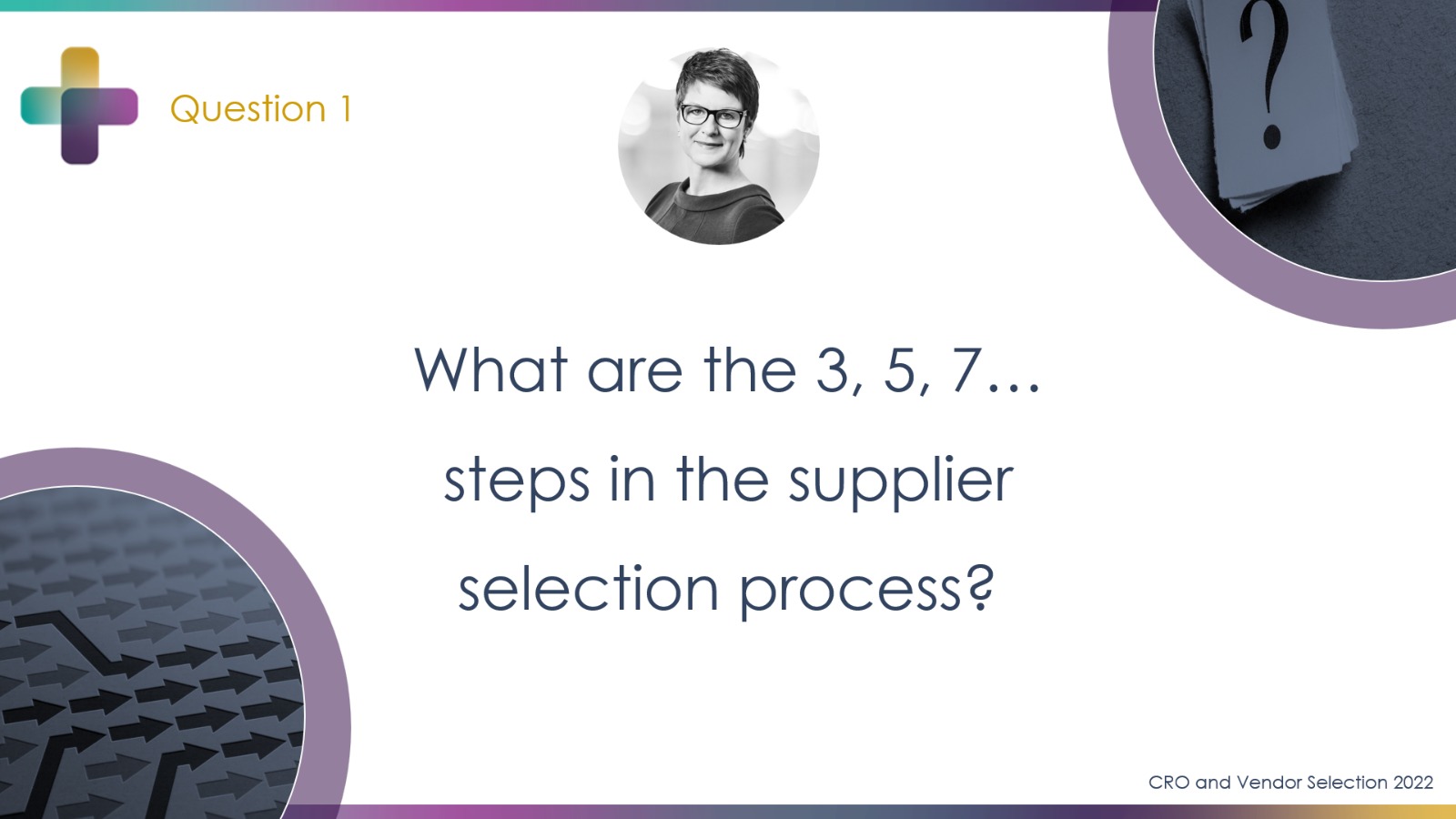
1. What are the 3, 5, 7… steps involved in the supplier selection process?
The CRO and supplier selection process is complex: there are many factors to consider, and collecting all the information you need can be overwhelming and difficult to manage. Seuss+ has developed a proprietary process with data at its heart, taking clients from team alignment to selecting criteria, conducting a market scan, developing an RFP and running a bid defense. And it’s all strongly rooted in data, making the final decision more reliable.
Sabine (04:26): “The process is really about getting data… You can actually look at this whole process as a funnel.”
Kieran (10:00): “There are generally three to seven people making a decision on any vendor. It’s a complex decision and it’s fraught with bias. So the intention with a strict data-driven process is to reduce at least a part of that bias. And if who you thought should be your partner is indeed the correct partner, they will come shining through at the end.”
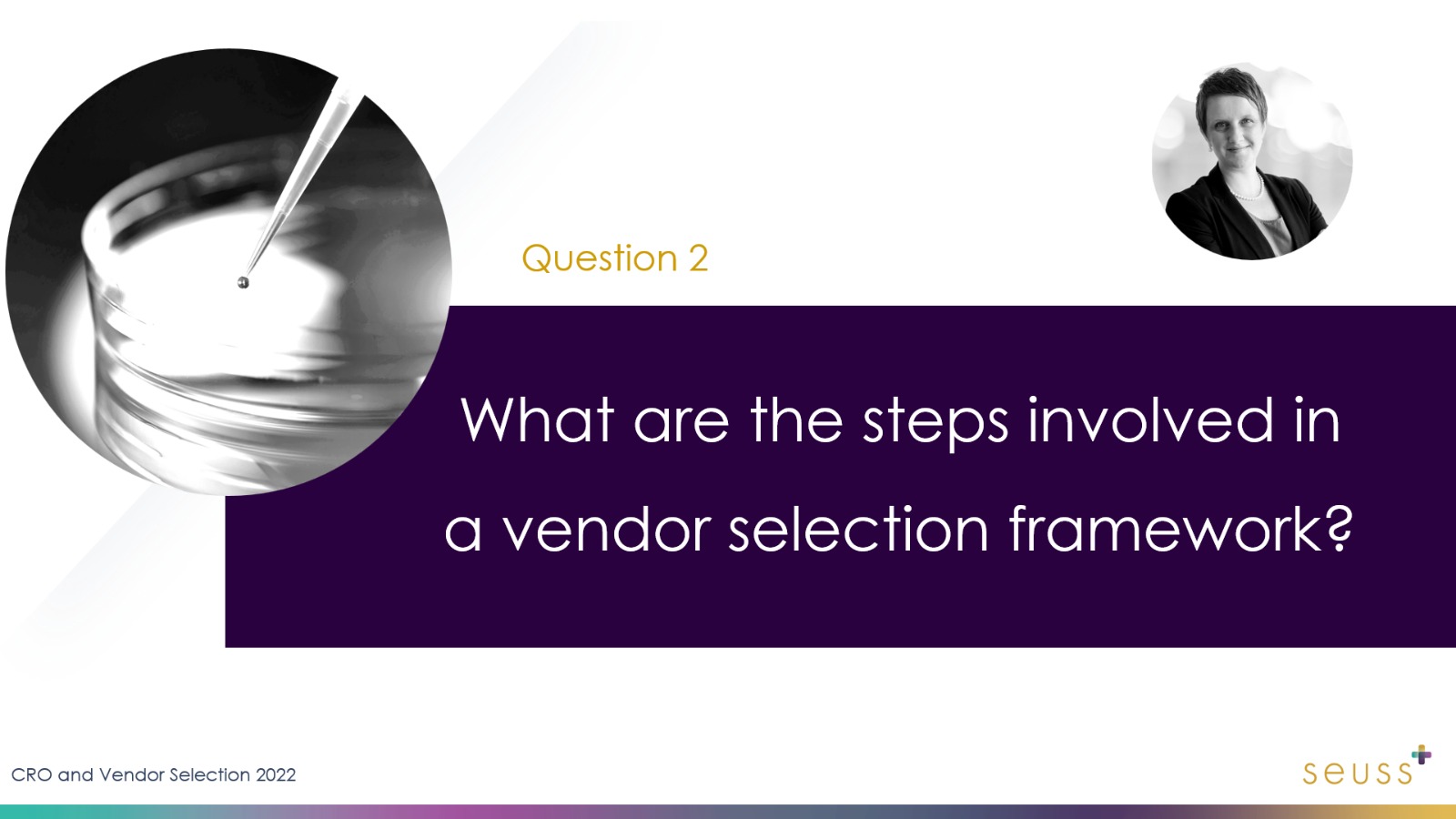
2. What are the steps involved in a vendor selection framework?
To hone in on the selection criteria and enable the sponsor to make a decision based on the right information, Seuss+ uses a vendor selection framework. With the framework, Seuss+ experts and sponsors can predict the risks that lie up ahead, and they make a decision at every corner.
Nicolyn (12:24): “[The framework] becomes this guiding north star for this, for the sponsor, and for ourselves, in terms of reminding us, who are we looking for? What is the best-fit partner or vendor for the sponsor? And how are we evaluating that?”
Kieran (18:29): “We’re not buying a cup of coffee from any of the suppliers… None of this is a simple purchase. A vendor selection process is meant to align, support with data analysis, and ensure we keep the risks and the data in our line of fire and sight while we’re making these decisions.”
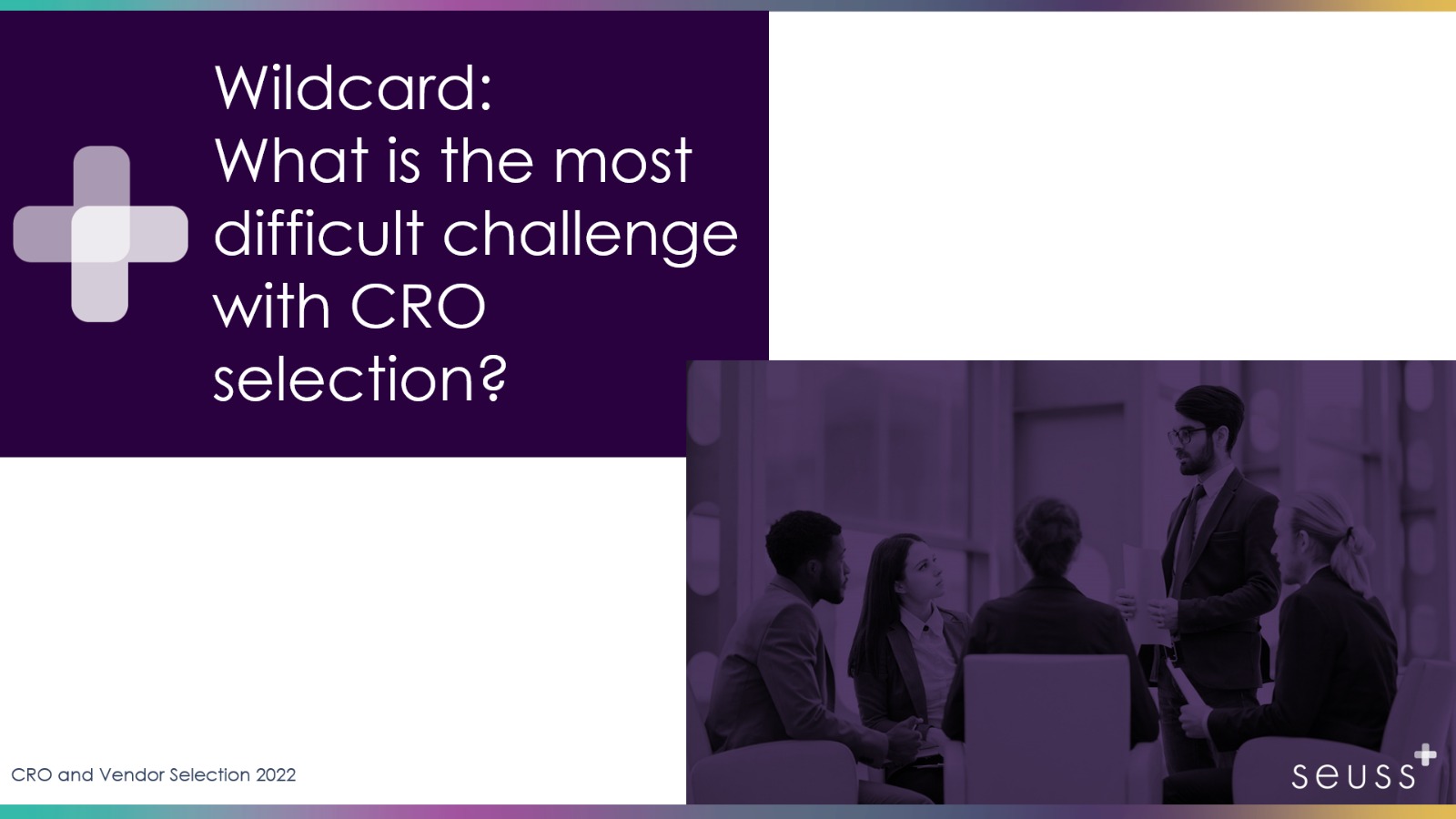
3. What is the most difficult challenge with CRO selection?
The process is rife with challenges and obstacles, and they’re around two main aspects of the process: the data and the people. Seuss+ has developed approaches to harness and analyse data and other information to support decisions, but people on all sides of the process can make it unpredictable. Overcoming these challenges requires knowledge and experience, and with that built into the framework, everyone involved can make a joint decision.
Sabine (22:25): “A lot of people just say, how in the world are we going to be able to find out if a company is proactive and feels accountable and doesn’t get defensive? That’s why we build elements into our process to pull those insights out.”
Nicolyn (23:41): “We talk of the sponsor in the singular, but really it’s a multifunctional team coming together to support the selection of a CRO. It’s not often that there’s only one voice coming through.”
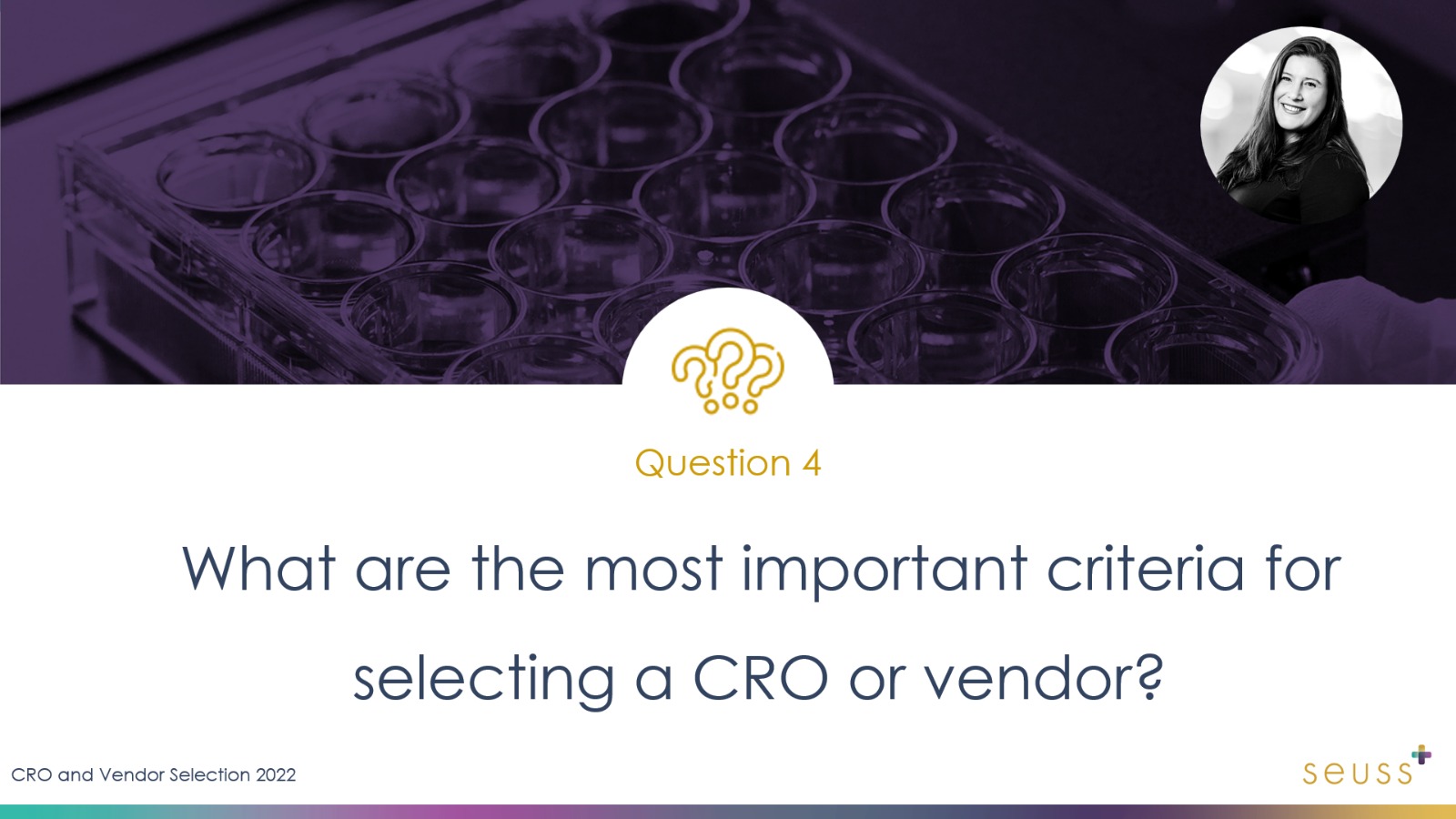
4. What are the most important criteria for selecting a CRO or vendor?
If the most important criteria were clear-cut, the vendor selection process would be simple. In reality, it’s a complex process that requires expert support. In the end, it’s important to focus on the desired result – what the company is looking for in a partner. Seuss+ understands the importance of looking for a supplier that’s complementary.
Kieran (29:51): “We need partners that we trust, that can help us through decisions, and that will not create blind spots for us. So if we choose a partner who is most like us, they may also trip over the same boulders and be fighting the same tigers that we will.”
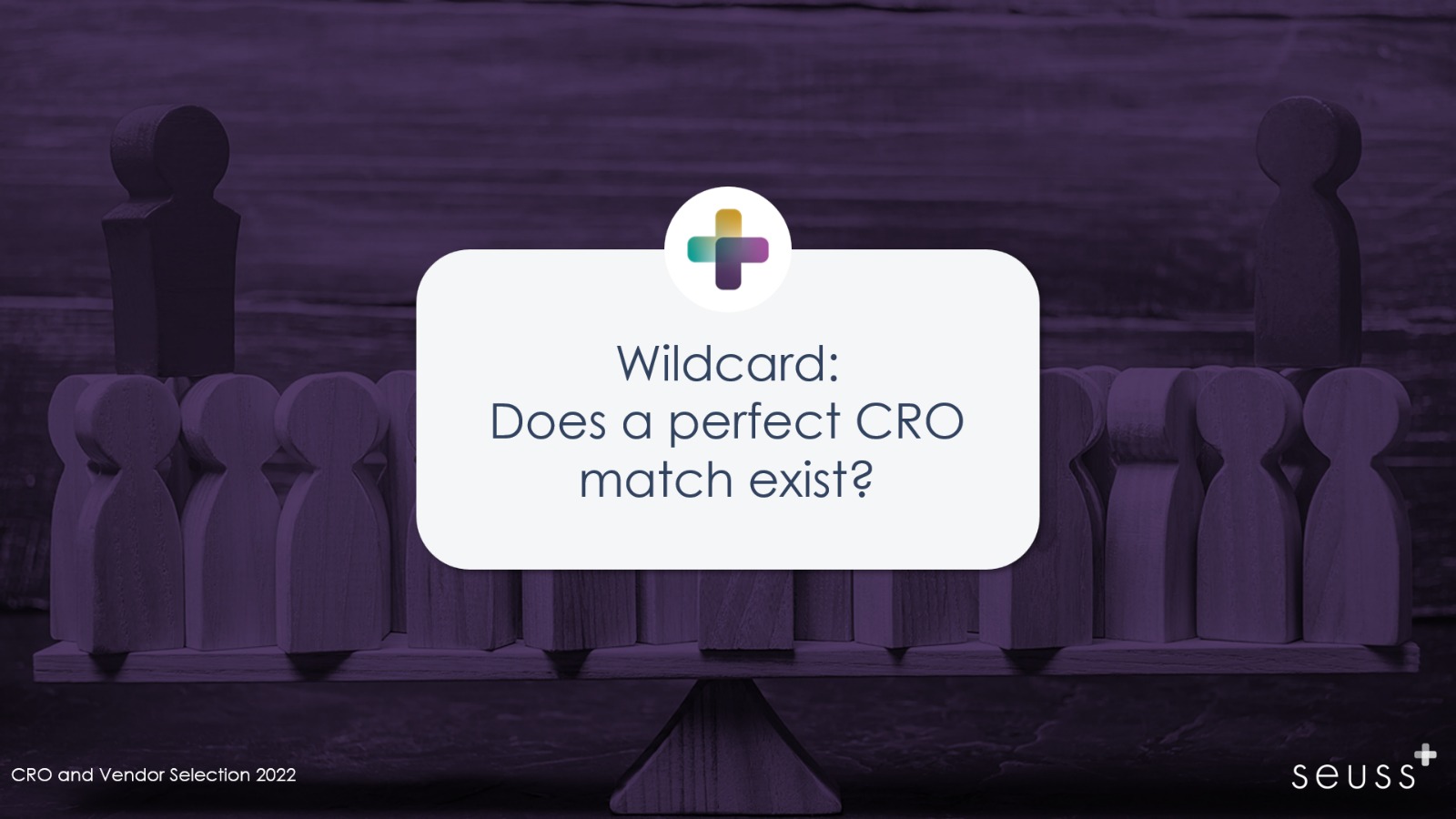
5.Does a perfect CRO match exist?
No partnership can be perfect over the long term; decisions made during the vendor selection process in clinical trials will be the best possible decisions at any given moment. While data and information can be reliably analysed, people are unpredictable – and they are at the core of any supplier relationship.
Nicolyn (33:24): “We tend to talk about the best-fit partner as opposed to the perfect partner. At the end of the day, both the sponsor and the partner, be it the CRO or a smaller supplier like a lab or a statistics supplier, are doing the best they can.”
Kieran (36:28): “Our whole industry talks about systems, data, the process. But what they don’t often acknowledge is that every single thing we do is either completely people and human based, or it’s touched by people.”
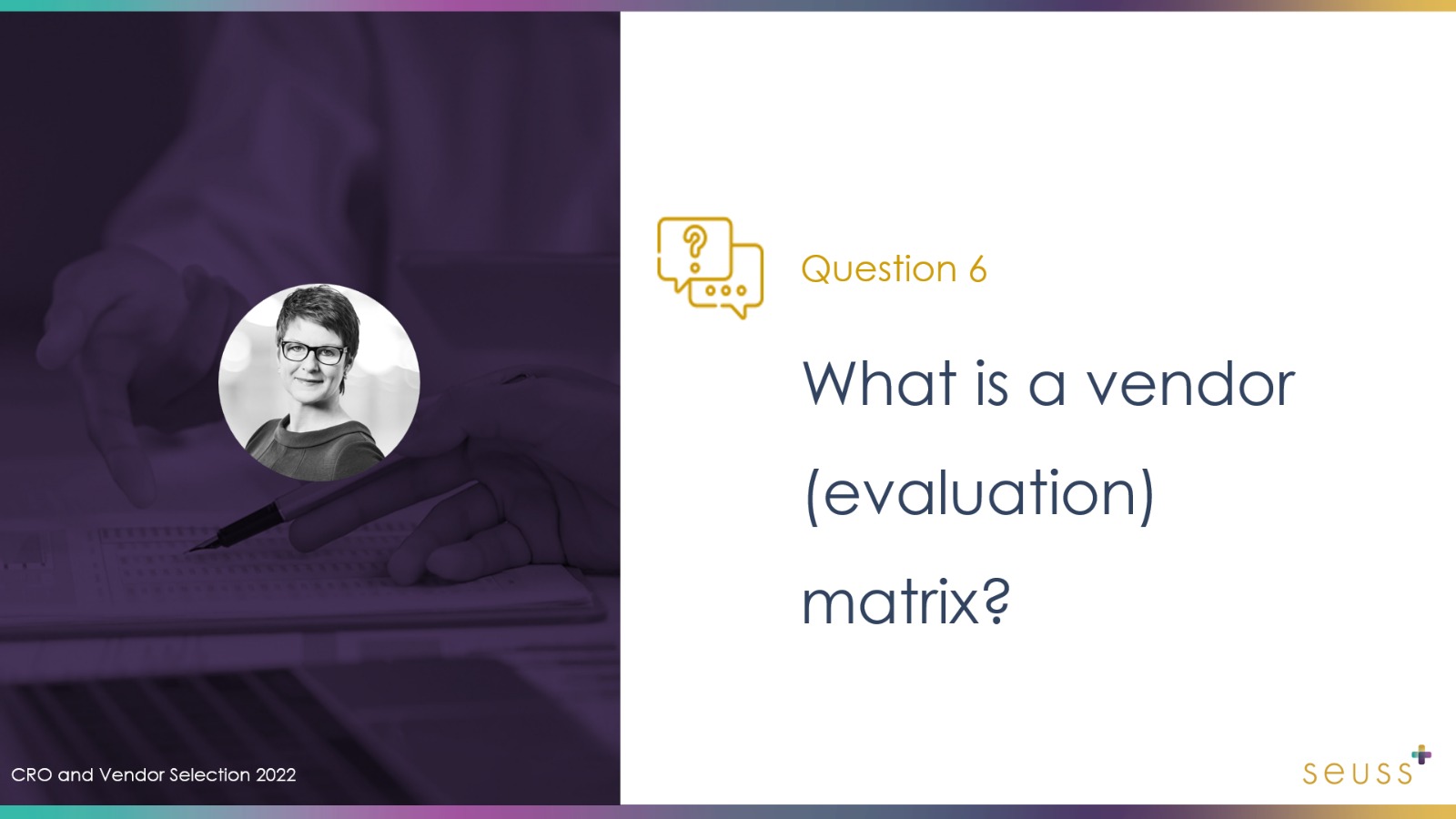
6. What is a vendor (evaluation) matrix?
To support the vendor selection process, Seuss+ has developed an evaluation matrix, which is used throughout the entire process. Each project is different, so depending on the needs and the criteria, evaluation metrics are established that can help overcome biases and keep the process focused.
Sabine (39:54): “[The vendor evaluation matrix] is a grid, it’s a tool. It’s how we compare data… We adjust our metrics depending upon the project we’re working on, and depending upon which phase of the vendor selection process we’re in.”
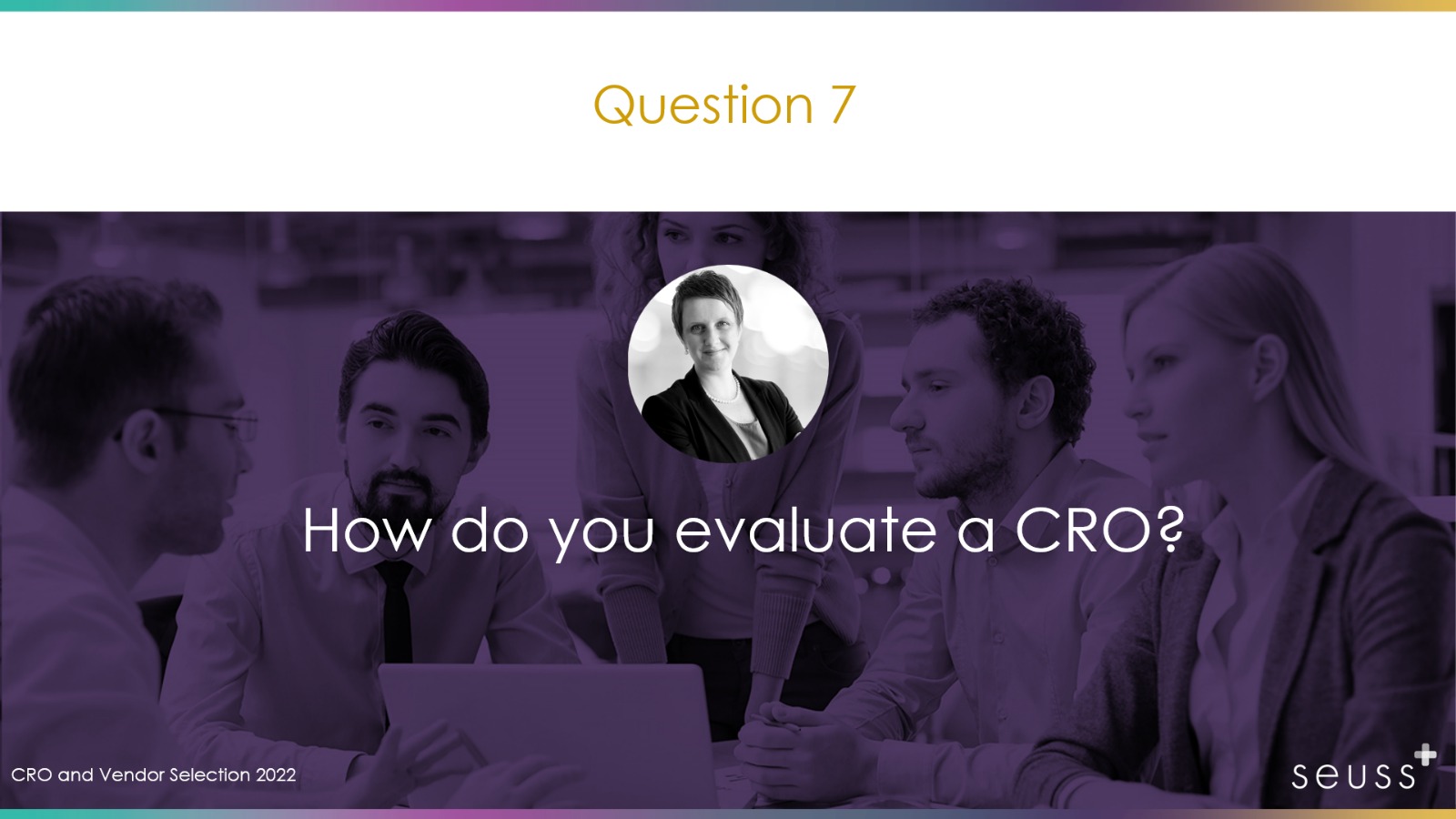
7. How do you evaluate a CRO?
All of the tools and approaches Seuss+ uses aim to ensure the decision is based on reliable data.
Nicolyn (48:15): “The hope is that this then can minimize bias again, one of our key goals and what we want to lead the sponsor to those data-driven decisions.”
Sabine (50:08): “[The data] allows us to actually dive in and to, understand better and get a clear understanding about what one CRO is doing compared to the others.”
(50:34): “That’s what I love about the data side. It allows us to look at that in more depth.”
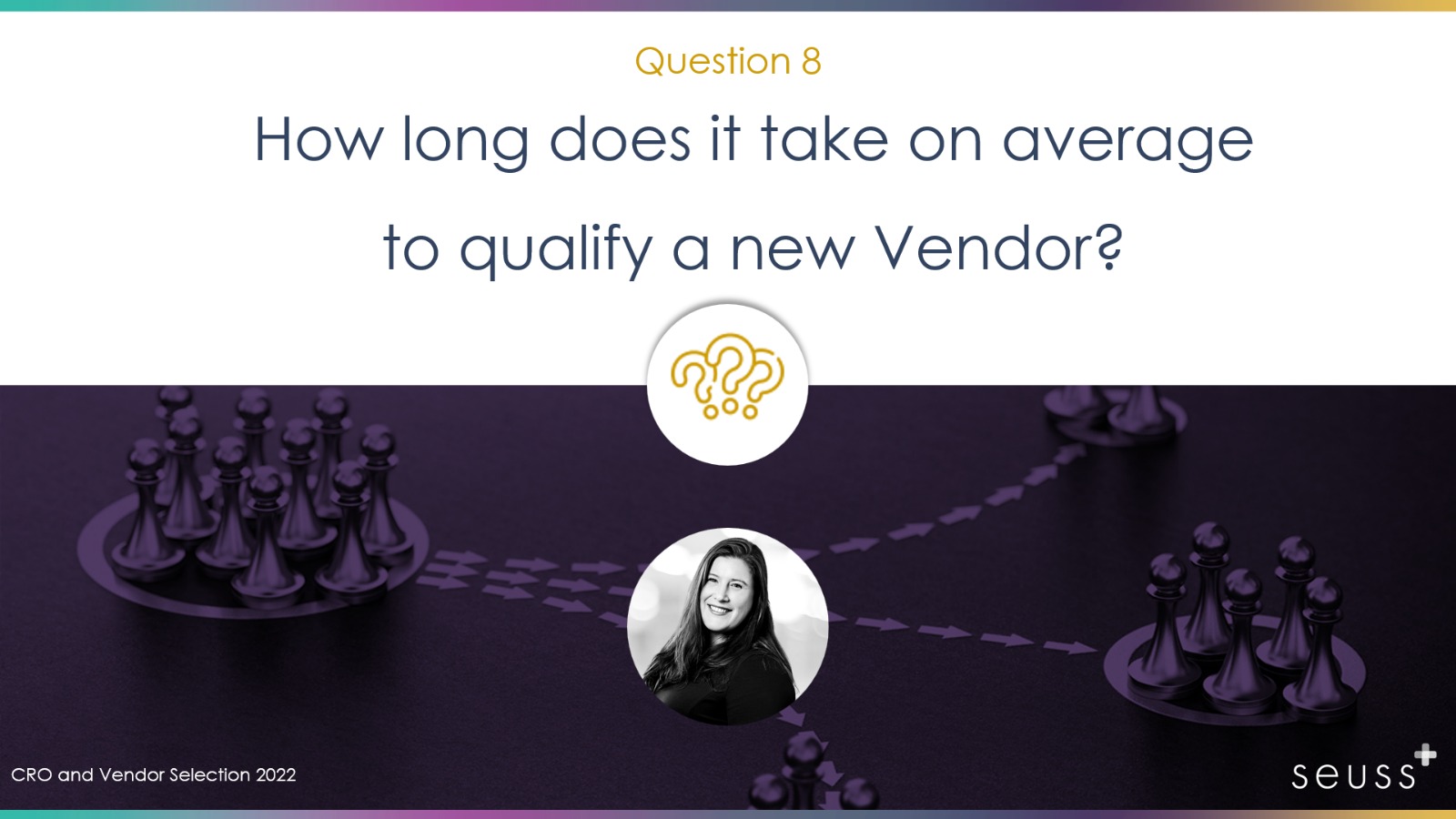
8. How long does it take on average to qualify a new vendor?
From alignment to contract negotiation, the vendor selection process can take three or four months on average. Although this is a question sponsors often ask with an eye on their deadline, it’s important to remember how critical, and how complex, the process can be.
Kieran (56:14): “The more critical the vendor, the longer you need. It is crucial to ensure that you’re making the right decision based on your data, that you’ve documented the process, and you are ensuring that any partner you’re looking for has the right capabilities.”
Do you have more questions about vendor selection, or are you looking for support from a selection partner?
You can watch the full webinar on-demand or contact us at Seuss+ for more information on our formalized CRO and vendor selection process in clinical trials.
We have two decades of experience helping biotechs make strategic decisions, and supporting teams like yours navigate this complex process. With our tried and tested vendor selection framework and vendor evaluation matrix, we can help you set criteria for vendor selection in clinical trials and find the life science services or solutions provider that best fits your needs.
Get in touch today!






0 Comments